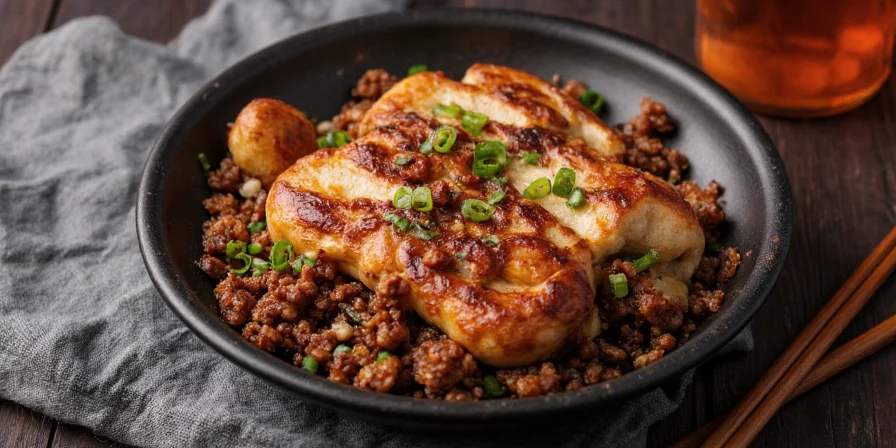Only English lavender (Lavandula angustifolia) is consistently safe for culinary use. This variety contains low camphor levels (3-5%) that deliver floral sweetness without medicinal bitterness. Avoid Lavandula stoechas ("French/Spanish lavender") with 20-30% camphor - it creates harsh, turpentine-like flavors unsuitable for food. Here's exactly which varieties work, how to use them properly, and critical safety information you need.
Edible Lavender: The Critical Safety Facts You Need First
Not all lavender is food-safe. The difference between a delightful culinary experience and an unpleasantly medicinal taste comes down to specific chemical profiles. Only Lavandula angustifolia (English lavender) qualifies as reliably edible due to its low camphor content. Consuming high-camphor varieties like Lavandula stoechas may cause digestive discomfort in sensitive individuals.
When purchasing 'culinary lavender,' always verify the scientific name - common names like 'French lavender' typically refer to non-edible varieties. Food-grade lavender must be grown without pesticides and processed specifically for consumption, unlike ornamental or craft varieties.
| Variety | Edible? | Camphor Content | Culinary Recommendation |
|---|---|---|---|
| English Lavender (Lavandula angustifolia) | ✅ Yes | 3-5% | Ideal for all applications. Sweet floral notes. |
| Lavandin 'Provence' | ⚠️ Limited | 10-15% | Use sparingly in robust recipes only. |
| Lavandula stoechas | ❌ No | 20-30% | Avoid. Harsh, medicinal flavor. |
| Munstead Dwarf | ✅ Yes | 4-6% | Compact plants ideal for container growing. |
| Tuscan Blue | ❌ No | 15-20% | Landscaping only. Too camphorous for food. |
The Science Behind Edible Lavender Selection
Lavender encompasses over 450 varieties with distinct chemical profiles. The critical factor for culinary safety isn't color or scent intensity, but specific terpene concentrations. Ornamental varieties often contain higher levels of camphor and cineole—compounds creating medicinal flavors unsuitable for food. Industrial-grade lavender used in soaps or sachets may carry pesticide residues inappropriate for consumption.
Historical confusion persists because Victorian-era cookbooks listed "lavender" without specifying varieties. Modern horticulture has clarified these distinctions, but common naming conventions remain dangerously misleading (e.g., "French lavender" refers to Lavandula stoechas, not culinary-safe types).
Optimal Culinary Applications for Edible Lavender
Maximize flavor while avoiding soap-like bitterness with these science-backed techniques:
- Precision measurements: Use 1/4 teaspoon dried buds per serving as starting point. Exceeding 1/2 tsp creates overpowering notes.
- Drying necessity: Fresh buds contain volatile oils 3x more concentrated than dried. Air-dry 10-14 days to mellow flavors.
- Flavor pairing science: Citrus acids (lemon/orange) counterbalance lavender's phenolic compounds. Avoid pairing with mint or strong herbs.
- Infusion method: Steep 1 tsp buds in 1 cup hot liquid (cream/syrup) for 20 minutes, then strain. Never boil—degrades delicate aromatics.
- Baking integration: Grind buds to powder for even distribution in dry ingredients. Whole buds concentrate bitterness in finished products.

Critical Mistakes That Ruin Lavender Dishes
Even with edible varieties, these errors compromise results and safety:
- Misidentification: Nursery tags often say "culinary lavender" without scientific names. Verify Lavandula angustifolia on labels.
- Over-infusion: Steeping beyond 25 minutes extracts bitter tannins. Set timers for precise control.
- Climate considerations: Same cultivar grown in humid climates develops higher camphor. Source from dry-climate growers when possible.
- Improper preparation: Using whole buds in beverages creates unpleasant mouthfeel. Always strain infusions.
- Degraded product: Dried lavender loses quality in 6 months. Store in opaque glass jars away from light/heat.
Guaranteed Food-Safe Lavender Growing Guide
For complete control over culinary lavender quality:
- Variety selection: Choose L. angustifolia cultivars specifically bred for culinary use (e.g., 'Royal Velvet').
- Soil chemistry: Alkaline soil (pH 7.0-8.0) reduces camphor production. Add crushed eggshells to planting holes.
- Harvest timing: Cut stems when 50% of flowers open (peak sugar content). Morning harvest captures highest essential oil concentration.
- Drying protocol: Bundle 5-7 stems, hang in dark, ventilated space 70°F (21°C). Buds ready when stems snap brittle.
- Food safety: Rinse gently before drying to remove dust. Never use plants treated with non-food-safe pesticides.

When Lavender Goes Wrong: Troubleshooting Guide
Common issues and science-based solutions:
- Soap-like flavor: Caused by excessive quantity or non-culinary varieties. Reduce amount by 50% and verify Lavandula angustifolia.
- Bitter aftertaste: Results from over-drying or using late-bloom flowers. Harvest at 50% bloom stage and dry in darkness.
- Allergic reactions: Though rare, lavender can cause skin irritation or respiratory symptoms. Those allergic to mugwort may experience cross-reactivity.
- Weak flavor: Indicates improper storage or degraded product. Use within 6 months of drying and store in airtight containers.
Professional-Grade Lavender Sourcing Guide
For optimal results, source food-grade lavender from specialty herb growers rather than craft or ornamental suppliers. This ensures proper cultivation practices and chemical profiles suitable for consumption. Look for USDA Certified Organic labels and ask specifically about camphor content testing.
Reputable culinary lavender suppliers will provide the exact scientific name (Lavandula angustifolia), growing region, and harvest date. Avoid bulk craft stores where lavender may have been treated with non-food-safe pesticides.

Frequently Asked Questions
Can lavender cause allergic reactions?
Yes, though rare. Lavender allergies typically manifest as skin irritation or respiratory symptoms. Those allergic to mugwort or birch pollen may experience cross-reactivity. Always introduce in minute quantities when first using.
How do I test lavender for culinary use before buying?
Rub a single bud between fingers to release oils, then smell. Edible varieties should have sweet, floral notes. Avoid any with strong medicinal or pine-like scents indicating high camphor.
Why does my lavender cookie taste like soap?
This occurs from excessive lavender quantity or using non-culinary varieties. Soap-like flavors come from saponins and high camphor content. Reduce quantity by 50% and verify you're using Lavandula angustifolia.
Can I substitute dried lavender for fresh in recipes?
No—dried lavender is 3x more concentrated. Use 1/3 the amount of dried versus fresh. Fresh lavender requires extended drying time (10-14 days) before culinary use to mellow volatile compounds.










 浙公网安备
33010002000092号
浙公网安备
33010002000092号 浙B2-20120091-4
浙B2-20120091-4